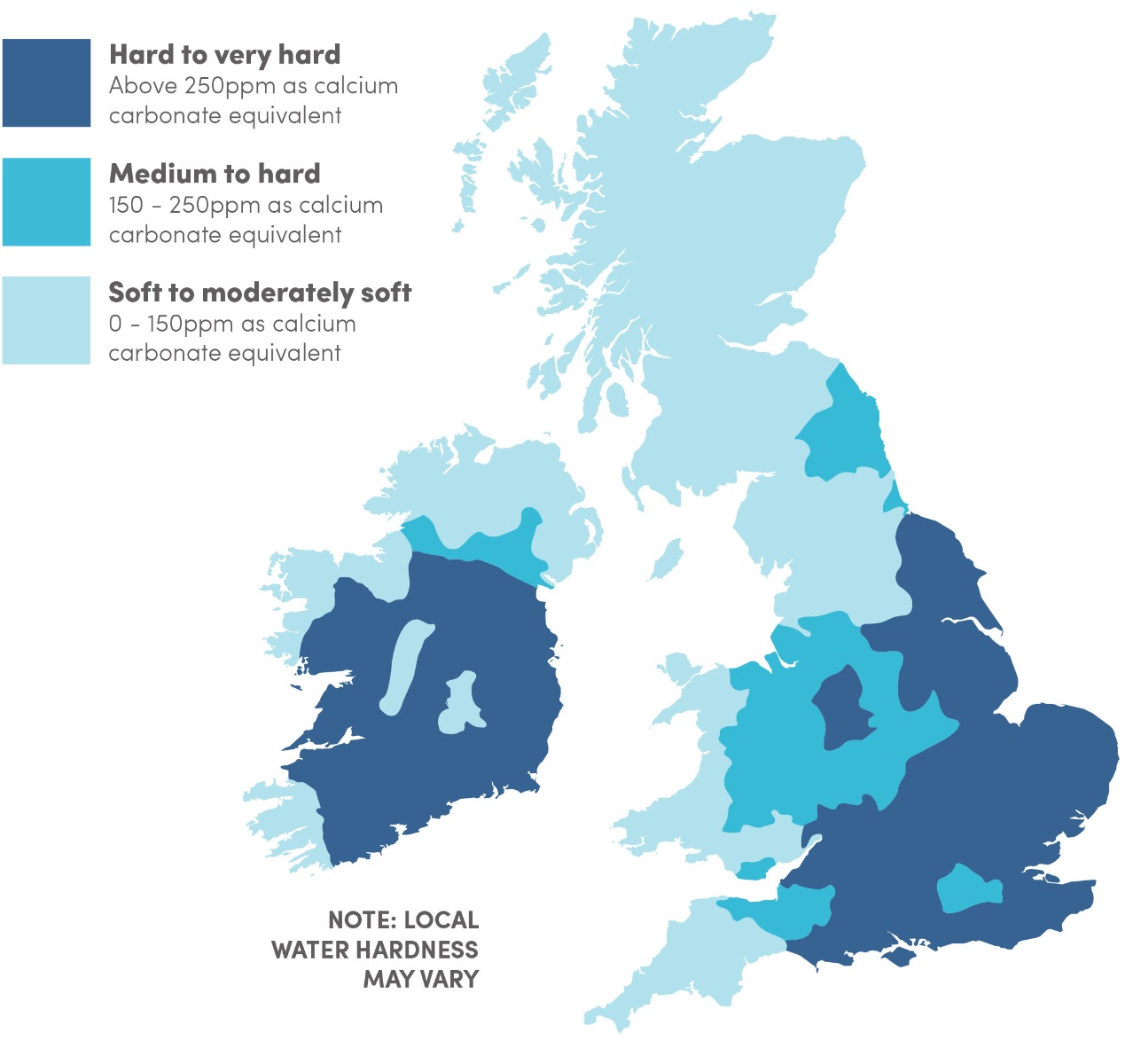Hard & Soft Water Areas
Back to maintaining your pool home

The map above illustrates a general overview of the water supplies in the UK. Please note this map is only a general indication as some hard water areas can contain small areas of soft water and vice-versa.
Hard Water
Hard water occurs due to the water supply filtering through soluble rock such as limestone and chalk, resulting in mineral salts such as Calcium and Magnesium Carbonate dissolving into it. In the context of pool water anything over 250 ppm is considered as hard, whereas anything greater than 500 ppm is considered very hard. Although some hardness is required to prevent corrosion of pool surfaces, too much can result is scaling, causing damage to fixtures and fittings. To prevent this from occurring it is important to maintain a stable pH level. As hard water also contains a high level of alkalinity 'pH lock' might occur therefore the alkalinity level needs to be reduced to 80 ppm before any pH correction can take place. Using a mildly acidic chlorine donor such as trichlor tablets or dichlor granules will also help achieve a 'natural' pH balance in the water.
Soft Water
Whereas hard water passes through soluble rock (limestone and chalk), soft water filters through insoluble rock such as granite, therefore picking up no minerals at all. In the context of pool water anything below 50 ppm is considered as soft. As mentioned earlier the pool water needs a certain amount of calcium and will have the tendency to find it in sources such as concrete or tile grout. Consequently this is only a problem for tiled in ground pools. To prevent this from happening Calcium Builder (Calcium Chloride) can be added to increase the hardness level to a minimum of 100 ppm. The addition of calcium hypochlorite as a shock treatment or a normal source of chlorine will also boost the calcium level. Along with low calcium levels, soft water also contains a low alkalinity level, which creates fluctuations in the pH level. To increase the alkalinity to 80 ppm use alkalinity builder. This will stabilise the pH level, which can be corrected (to 7.2-7.6) using pH reducer and pH increaser.
